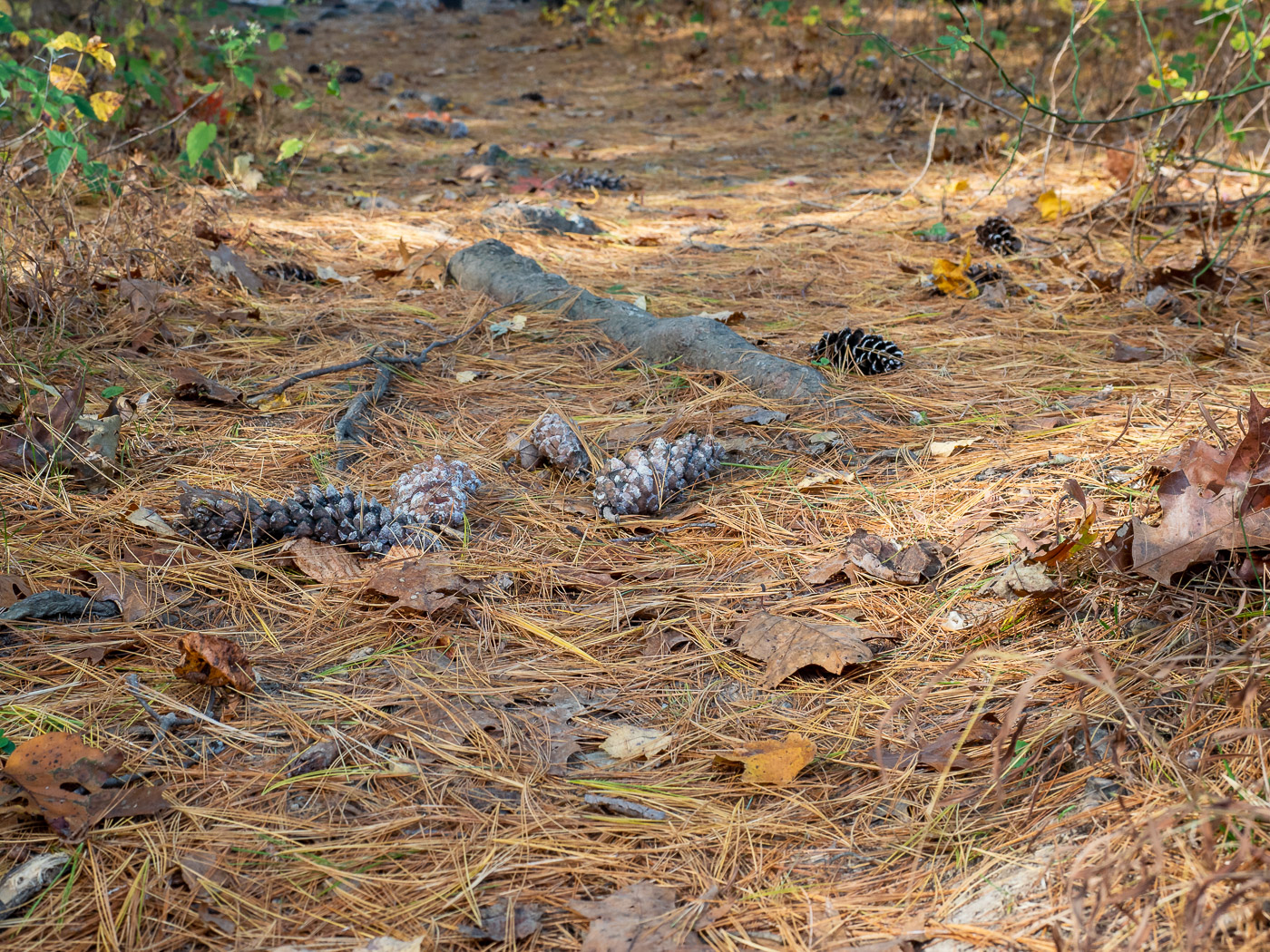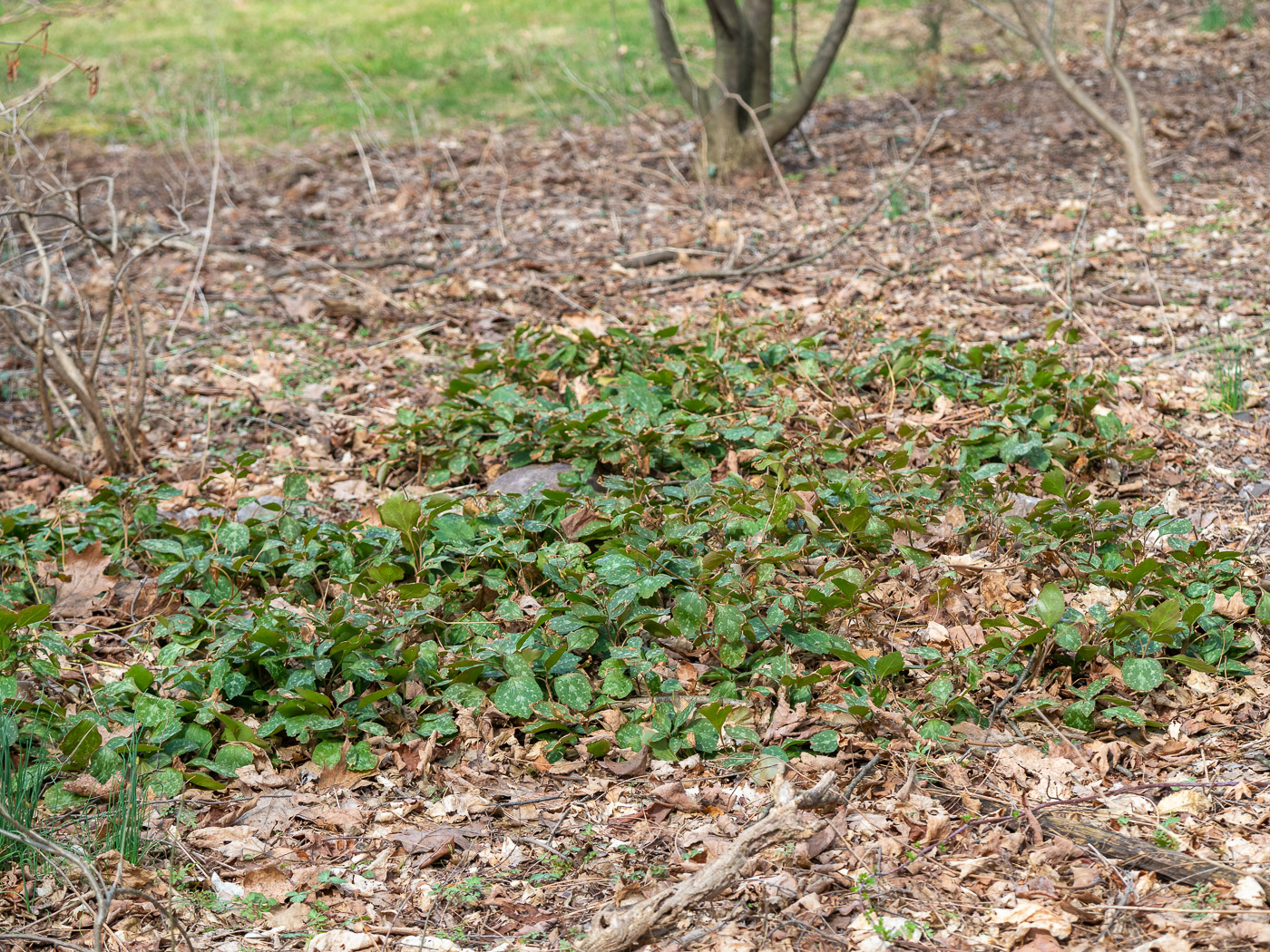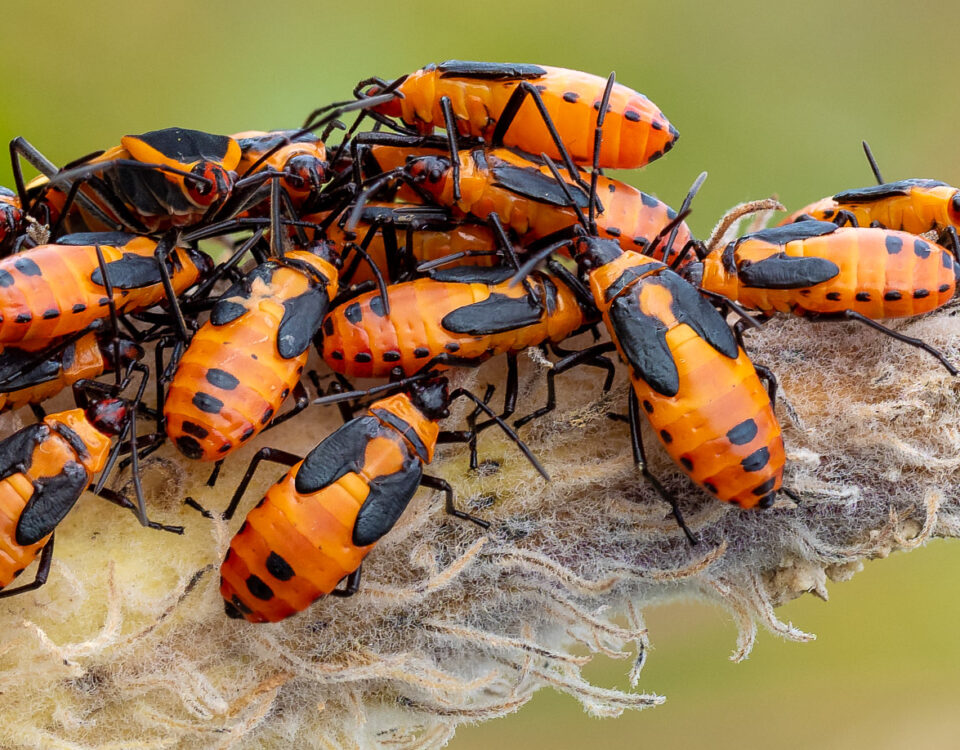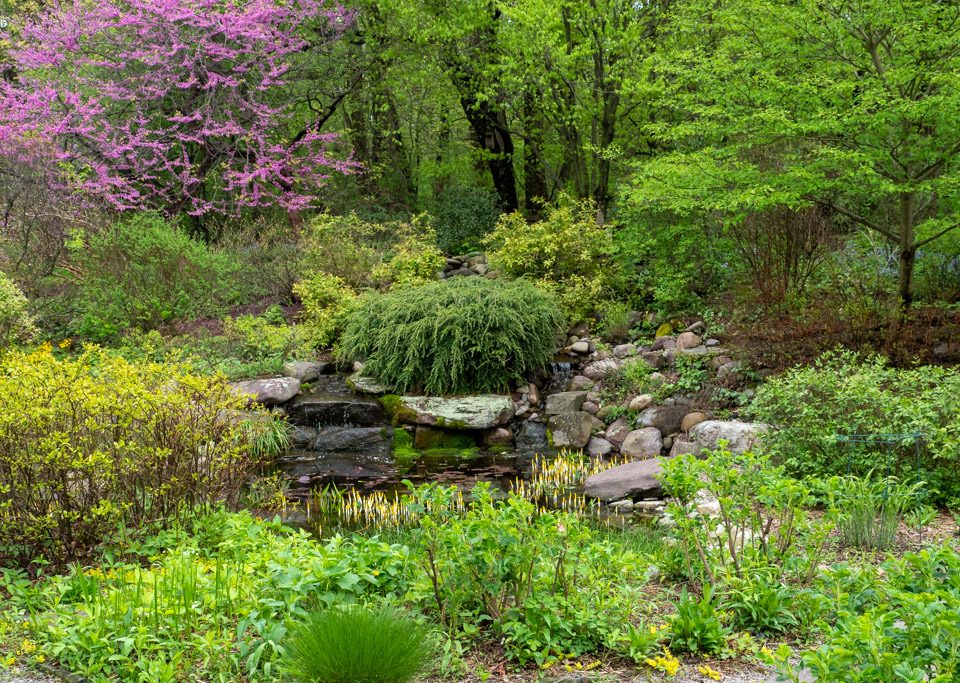Leave the Leaves

Secretive Pumpkin Spiders
October 21, 2020
Why Plant Winterberry Holly?
December 5, 2020It’s fall and the leaves are decaying from their rainbow of reds, yellow, and oranges, and of course falling.
But should you leave the leaves on the ground? The simple answer is yes, you should in most places. But this might be a challenge for some of you conditioned to perceive leaves as a “mess” in your yard that need to be removed.
A more nuanced approach to leaves is part of natural landscape practices with the object to support ecosystem health and balance. By applying a natural approach to fall “clean-up”, there is less work and it’s aimed differently.
First we’ll cover why to leave the leaves, and then we’ll give you fall clean-up recommendations for what you should still do.

Humans perceive nature as "messy", but this backyard bed needs no clean-up. The fallen leaves and perennial seed heads are important for wildlife and plant communities.
Why Leave the Leaves (deciduous and conifer needles)?
As we plant more native plants in our yards and want to attract more birds and pollinators, transitioning to natural landscaping practices like leaving leaves in place protects our plants and what we’re attracting.
Here’s why:
For the Plants and Soil. Nutrients and organic matter are recycled naturally from decaying leaves to the soil and back to plants. Remove the leaves, and you interrupt the natural recycling process. Leaves are also a natural mulch (for “free”), protecting plants through the winter and suppressing undesired weeds in early spring. The alternative of purchasing mulch and fertilizer not only costs money, but can be an incorrect match for soil and plant needs.
For Arthropods. Insects and spiders survive winter in immature stages (a few species overwinter as adults). To complete their life cycle, many eggs, pupa, and larvae (including caterpillars) must survive the freezing temperatures of winter in the soil or leaf litter. If you’re creating a native plant habit for wildlife, many of next year’s insects are in the leaf litter or protected by its insulating effect on the ground.
For Larger Wildlife. Food, cover, and shelter from leaves and other plant debris left on the ground support wildlife. Birds and mammals rely on winter food sources of seeds, fruits, and even immature insects that are on the ground with leaves. Some salamanders and frogs remain in the leaf litter while toads burrow into the ground. Predators like owls and fox hunt the mammals to feed their young in late winter. Come spring, birds use the debris for nesting material, and will locate their nests where they can find a reliable source of insect larvae for nestlings. No food source – no baby birds!
For the Environment and You. No unnecessary fossil fuel usage, no noise pollution from blowers, no undesirable landfill additions. By letting nature do its thing, you are reducing your carbon footprint, and there is less work for you.
Examples of natural habitat:

Natural Deciduous Woodland in late October - A healthy woodland ecosystem relies on the natural recycling of its leaves

Natural Deciduous Woodland in January - This woodland has a thick leaf understory protection for the coldest part of winter.

Conifers lose older needles each year too. Treat them like deciduous leaves.
Natural Landscaping Fall Leave Clean-up Recommendations
No matter how successful we are at recreating natural ecosystems in our yards, we still have lawns and man-made systems that require consideration. When you do need to remove leaves from an area, redistribute them on your property if possible or start a compost pile. Wait until after a heavy frost to allow insects to reach their wintering stages. In the future, we’ll address other natural landscaping clean-up issues.
Here's what to do about leaves:
- For pavement - Remove leaves and vegetation from paved walkways where people can slip on wet or frozen leaves.
- For water management - Remove leaves from gutters and approaches to rain water collection areas to prevent clogging.
- For planting and foundation beds – leave the leaves, but if you have an extremely heavy load on sensitive plants, remove excess but not all of the debris. Leave perennial vegetation throughout the winter for all the same reasons, plus it helps retain leaves on windy days.
- For natural areas – leave all of the leaves in wooded and shrub spaces.
- For lawns – turf grasses can withstand some leaves and will benefit from their decomposition. If you have deep piles, then in late fall/ early winter, reduce the leaf load. An easy way to accomplish this is by using a mulching mower to chop up and redistribute leaves over the lawn. Consider replacing lawn under tree canopies with native plant communities in the future.
- If you live in a fire hazard location, follow guidance of your local authorities.

Planting Bed in November - Leaves cover the ground of this mixed herbaceous and woody bed.

Tree Canopy Bed - Leaf retention and maintenance is simplified by planting perennial beds under tree canopies. Trees benefit as well.

Leaves on Lawn - Use a mulching mower to remove smothering clumps and distribute leaves to nurture turf grass.

Planting Bed in April - By April, the "messy" backyard bed is matted down and new season plants easily grow through them.




